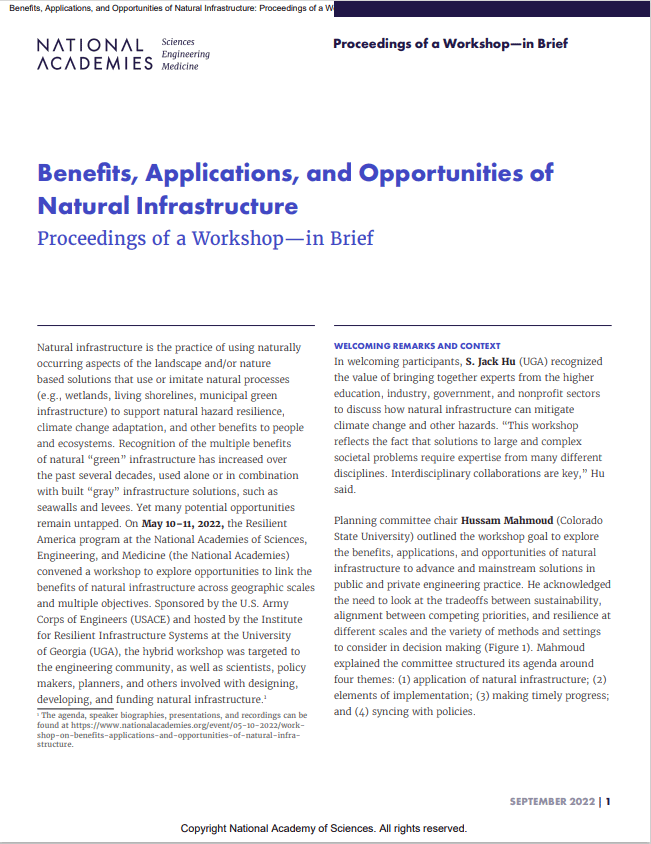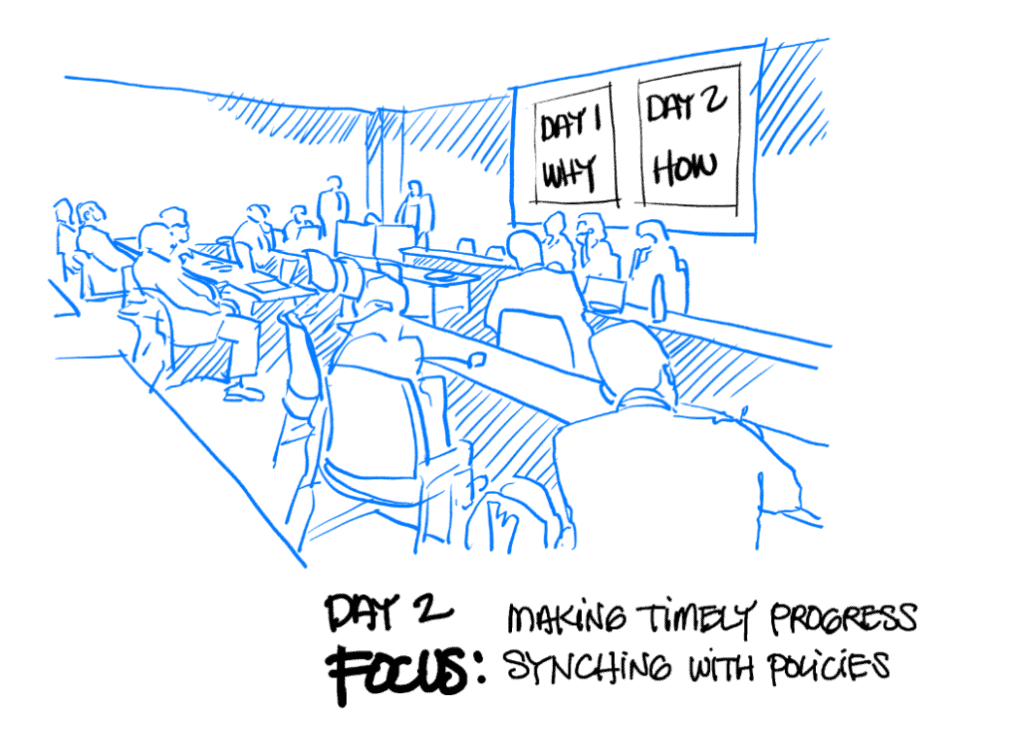
Natural infrastructure is the practice of using naturally occurring aspects of the landscape and/or nature-based solutions that use or imitate natural processes (e.g., wetlands, living shorelines) to support natural hazard resilience, adaptation, and other benefits to people and ecosystems. Recognition of the multiple benefits of natural infrastructure has increased over the past several decades, used alone or in combination with built infrastructure solutions, such as seawalls and levees. Yet many potential opportunities remain untapped.
On May 10-11, 2022, the Resilient America program at the National Academies of Sciences, Engineering, and Medicine convened a workshop to explore opportunities to link the benefits of natural infrastructure across geographic scales and multiple objectives. Sponsored by the U.S. Army Corps of Engineers and hosted by the Institute for Resilient Infrastructure Systems at the University of Georgia, the hybrid workshop was targeted to the engineering community, as well as scientists, policy makers, planners, and others involved with designing, developing, and funding natural infrastructure. This publication highlights the presentation and discussion of the workshop.
Link to publication and workshop materials.
Day 1
Day 1 visual wrap-up. View all Day 1 Sketches.
SOURCE: Brett Wylie, Workshop Presentation, May 10, 2022.
Day 2

SOURCE: Brett Wylie, Workshop Presentation, May 11, 2022.





